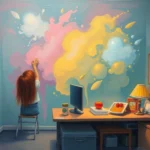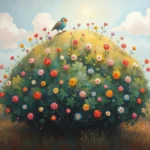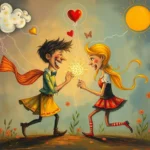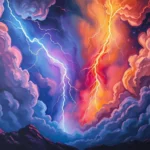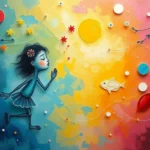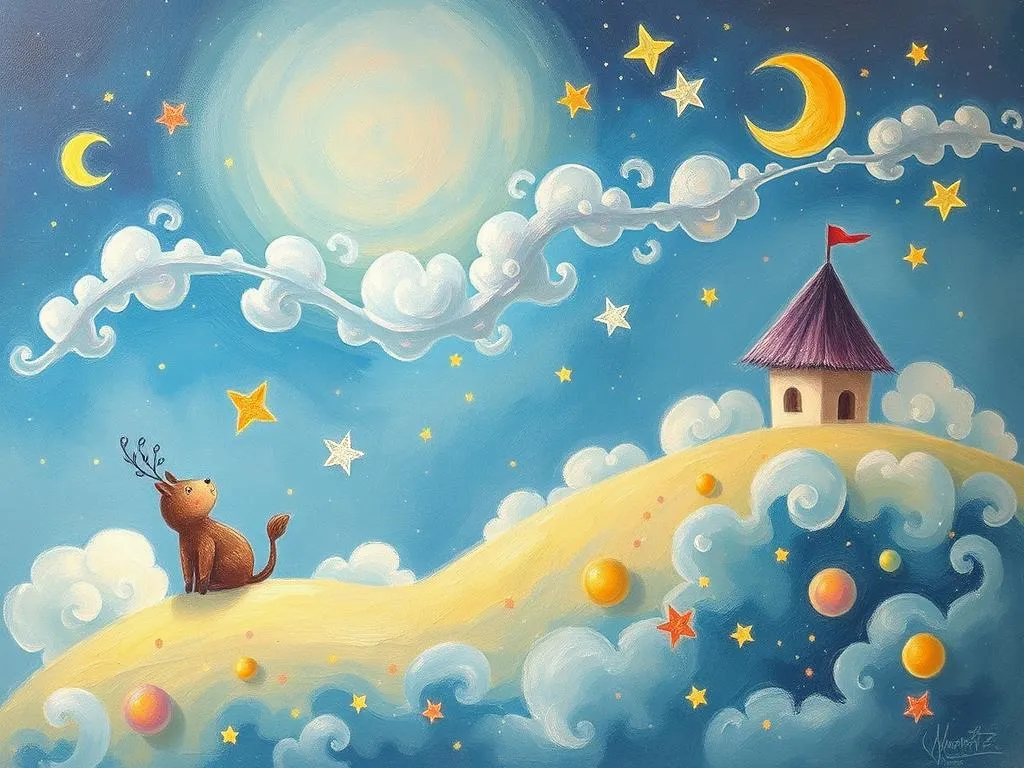
Dreams have long fascinated humanity, serving as a bridge to our subconscious mind. They can bring forth profound insights, reveal hidden fears, or inspire creativity. Among the various themes that dreams can explore, imagination stands out, captivating dreamers with its vivid imagery and boundless possibilities. The relevance of imagination in dreams lies not only in the fantastical landscapes and scenarios that unfold but also in the deeper meanings they may hold about our waking lives. This exploration is not merely an exercise in curiosity; understanding the role of imagination in dreams can provide invaluable insights into our desires, fears, and unexpressed thoughts.
Symbolism and Meaning
When we delve into the symbolism of imagination in dreams, we encounter a rich tapestry of meanings. Dreams that center around imaginative experiences can often symbolize creativity, freedom, and the exploration of one’s inner self. Common symbols related to imagination include fantastical creatures, vivid landscapes, and extraordinary events—all of which evoke a sense of wonder and possibility.
For instance, dreaming of flying might represent a desire for freedom and escape from the constraints of everyday life. This flight can symbolize the liberation of the imagination, suggesting a need to rise above current challenges. Alternatively, fantastical creatures, such as dragons or unicorns, may symbolize untapped potential or the pursuit of goals that seem just beyond reach. Each of these symbols encourages the dreamer to explore their desires and aspirations in a more liberating context.
From a psychological perspective, imagination in dreams can also reflect the process of problem-solving. When faced with challenges in waking life, our minds may generate creative solutions through dream imagery. This aspect of dreaming emphasizes the brain’s ability to connect disparate ideas, leading to breakthroughs that might not have been possible during conscious thought. In this sense, imagination serves not only as a source of inspiration but also as a tool for navigating life’s complexities.
Additionally, the emotional tone of the dream plays a crucial role in interpreting its meaning. A dream filled with vibrant colors and joyous scenarios might indicate a positive outlook on creativity and self-expression. Conversely, if the imaginative scenarios evoke feelings of fear or anxiety, it may point to unresolved issues or fears stifling one’s ability to dream freely. Thus, the emotional response to imaginative dreams is a significant factor in understanding their deeper significance.
Key Scenarios and Variations
The beauty of dreams lies in their variability; the same theme can manifest in countless ways, each providing distinct insights. For example, one person may dream of creating an elaborate painting, while another might find themselves in a surreal landscape where the laws of physics seem to bend. Each scenario offers a unique perspective on imagination and its implications.
Consider a dream where the individual is an artist painting a canvas that transforms with each brushstroke. This scenario might suggest a desire for self-expression and a longing to manifest one’s ideas into reality. It can also symbolize the process of personal growth, where each stroke represents a step toward self-discovery. Here, the act of creating in a dream reflects the dreamer’s real-life aspirations and creative pursuits.
In contrast, a dream that features a chaotic scene, such as a never-ending maze filled with bizarre imagery, can evoke feelings of confusion and overwhelm in the dreamer. This scenario might symbolize the dreamer’s struggles with decision-making or a sense of being trapped in their imagination. Such a dream could indicate a need to confront and untangle the complexities of their thoughts and feelings, urging them to find clarity amidst the chaos.
Another variation could involve dreaming of engaging in a fantastical adventure, such as exploring an enchanted forest or embarking on a quest alongside mythical beings. This type of dream often symbolizes the desire for adventure and exploration in waking life. It may reflect a longing to break free from routine and seek new experiences. The dreamer might find themselves at a crossroads, where the imagination serves as a guiding force, encouraging them to embrace change and explore uncharted territories.
Moreover, the presence of other characters can further modify the interpretation. Dreaming of interacting with famous figures or historical icons in imaginative settings may represent a desire to connect with their wisdom or emulate their qualities. Alternatively, encountering loved ones in a dream can symbolize a yearning for connection and support as one navigates the complexities of life. Each character’s role in the dream can provide additional layers of meaning, revealing the dreamer’s current emotional landscape.
Real-Life Connections and Takeaways
Understanding the role of imagination in dreams encourages individuals to reflect on their real-life experiences and emotions. Dreams often serve as a mirror, reflecting our inner thoughts and desires, and can inspire us to take action in our waking lives. By analyzing the themes and symbols present in imaginative dreams, individuals can gain valuable insights into their aspirations, fears, and relationships.
For instance, if a dreamer frequently experiences imaginative scenarios that evoke joy and creativity, it may be a sign to prioritize self-expression in their daily life. Engaging in creative activities, whether through art, writing, or music, can help channel the vividness of their dreams into tangible forms. This may not only boost their mood but also foster a deeper understanding of their inner self.
Conversely, if the dreamer finds themselves trapped in chaotic or frightening imaginative scenarios, it might be time to confront underlying fears or anxieties. Reflecting on these emotions can lead to a better understanding of the sources of stress in their life. It may also prompt the dreamer to seek support from friends, family, or professionals who can help navigate their feelings.
Another practical takeaway involves keeping a dream journal. Recording dreams upon waking can help individuals identify patterns, symbols, and recurring themes. By noting their feelings and thoughts about these dreams, they can connect their dream experiences to their waking life more effectively. This practice can enhance self-awareness and provide a deeper understanding of how imagination influences their thoughts and actions.
Lastly, individuals are encouraged to foster their creativity in waking life. Engaging with imagination through hobbies, brainstorming sessions, or even daydreaming can be beneficial. Allowing oneself the freedom to explore ideas without constraints can lead to personal growth and new opportunities. By embracing imagination, individuals can cultivate a richer, more fulfilling life that aligns with their inner desires.
In conclusion, the exploration of imagination in dreams opens a window into our subconscious, revealing the rich landscape of our thoughts and emotions. By understanding the symbolism, variations, and real-life connections of imaginative dreams, individuals can gain profound insights into their desires and fears. Encouraging self-reflection and creativity, these dreams can serve as a guiding force in navigating life’s challenges and aspirations. As you explore the realm of your dreams, remember to embrace the beauty of your imagination—it holds the key to unlocking your true potential.
